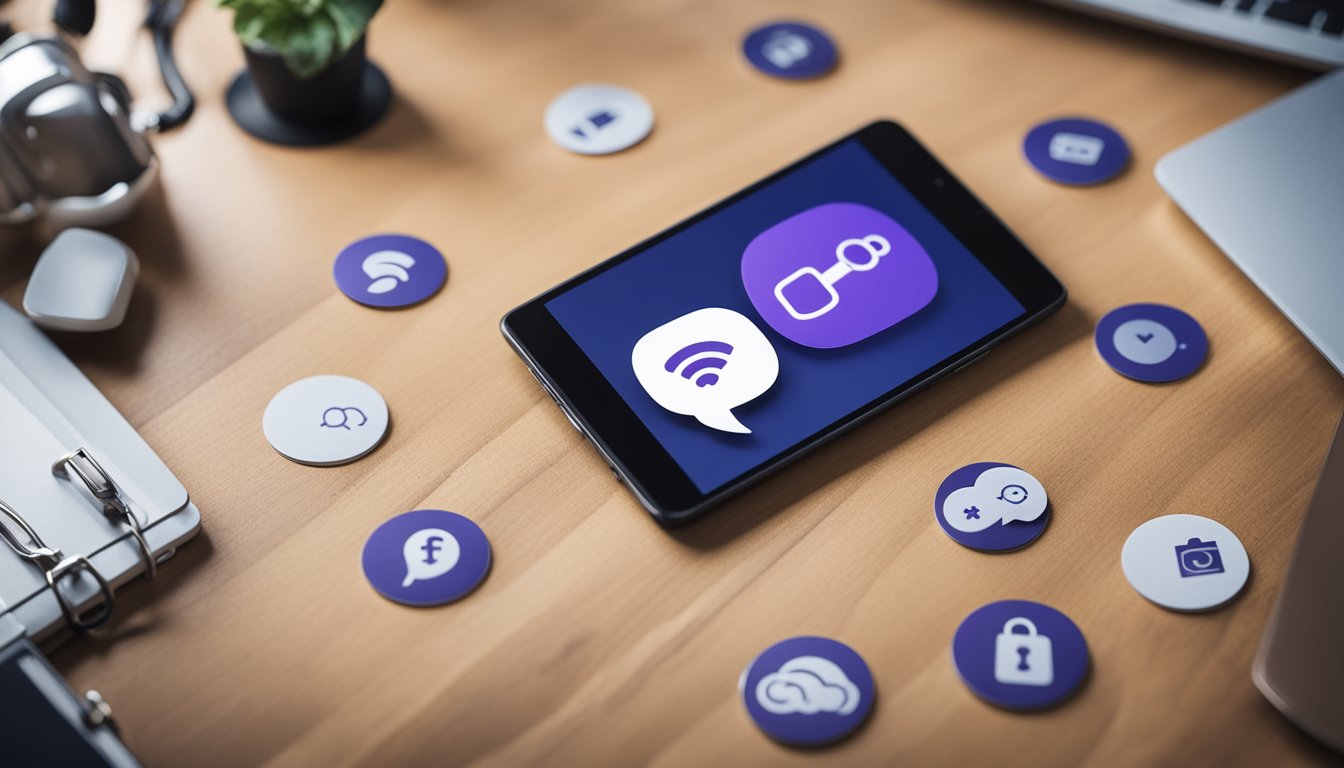Secure Collaboration with Microsoft Teams A Comprehensive Guide
As businesses around the world continue to embrace remote work, secure collaboration has become more important than ever. Microsoft Teams offers a suite of productivity services that work together to provide collaboration experiences with data governance, security, and compliance capabilities. With Microsoft Teams, businesses can securely share files, communicate with team members, and collaborate on projects in real-time.

Security measures in Microsoft Teams are designed to safeguard data and privacy, and help businesses stay compliant. From safer video meetings to cyberthreat defense, Microsoft Teams is backed by Microsoft 365 to provide businesses with the tools they need to collaborate securely. Additionally, Microsoft Teams allows businesses to manage user access and permissions, ensuring that sensitive content is only accessible to authorized team members.
With collaboration tools and features in Microsoft Teams, businesses can work together in real-time, no matter where their team members are located. Microsoft Teams allows users to share files, co-author documents, and even host virtual meetings with video and audio capabilities. Teams can also be customized to meet the unique needs of each business, with the ability to add third-party apps and integrate with other Microsoft 365 services.
Key Takeaways
- Microsoft Teams offers a suite of productivity services with data governance, security, and compliance capabilities for secure collaboration.
- Security measures in Microsoft Teams safeguard data and privacy, and help businesses stay compliant.
- Collaboration tools and features in Microsoft Teams allow real-time collaboration, customization, and integration with other Microsoft 365 services.
Security Measures in Microsoft Teams

When it comes to secure collaboration, Microsoft Teams provides a wide range of features and capabilities to help protect your data and communications. In this section, I will cover some of the key security measures in Microsoft Teams, including authentication and access control, data security and compliance, and threat protection and response.
Authentication and Access Control
Microsoft Teams uses modern authentication and Azure Active Directory to provide secure access to the service. This means that users must authenticate themselves before they can access Teams, and their access is controlled by conditional access policies. These policies can be configured to require multi-factor authentication, device compliance, and other conditions before granting access.
In addition, Microsoft Teams provides granular permissions controls for Teams, channels, and files. This allows administrators to control who can create, view, and edit content, as well as who can invite guests to Teams.
Data Security and Compliance
Microsoft Teams follows all the security best practices and procedures, such as service-level security through defense-in-depth, customer controls within the service, security hardening, and operational best practices. Microsoft Teams also provides built-in sensitivity labels and encryption capabilities to help protect your data.
Additionally, Microsoft Teams is designed to meet a wide range of compliance standards, including HIPAA, ISO 27001, and GDPR. Microsoft Teams also provides compliance features such as eDiscovery and legal hold, as well as integration with Microsoft Purview for data governance.
Threat Protection and Response
Microsoft Teams provides a range of threat protection and response capabilities to help protect against phishing attacks, malware, and other security threats. For example, Microsoft Teams includes Safe Links, which helps protect against malicious links in messages and files.
Microsoft Teams also provides advanced threat protection capabilities through Microsoft Defender for Office 365. This includes prevention, detection, and response capabilities, as well as attack simulation to help identify vulnerabilities and improve security best practices.
Overall, Microsoft Teams provides a comprehensive set of security measures to help protect your data and communications. By following security best practices and leveraging the built-in security features in Microsoft Teams, you can help ensure that your collaboration is safe and secure.
Collaboration Tools and Features in Microsoft Teams

As a collaboration tool, Microsoft Teams offers a wide range of features that allow users to communicate, collaborate, and share files securely. In this section, I will discuss some of the key tools and features available in Microsoft Teams.
Communication and Meetings
Microsoft Teams provides real-time messaging and video conferencing features that allow team members to communicate and collaborate effectively, no matter where they are located. Users can hold one-on-one or group meetings, share their screens, and turn on live captions during meetings. Additionally, Teams also supports private channels, which allow users to have a focused conversation within a specific group of people.
File Collaboration and Sharing
Microsoft Teams offers a variety of tools for file collaboration and sharing. Users can share files and collaborate on them in real-time, using tools like OneNote and SharePoint. Teams also supports external sharing, which allows users to share files with people outside their organization. However, tenant admins can control external access to ensure that sensitive data is not shared with unauthorized users.
Private and Group Collaboration
In Microsoft Teams, users can create private teams and channels to collaborate on specific projects or topics. Private teams are only visible to team members, and private channels can be used to have a focused conversation within a team. Additionally, Teams also supports sensitivity labels, which allow users to classify files and messages based on their sensitivity level. This helps ensure that sensitive data is only shared with authorized users.
Overall, Microsoft Teams provides a comprehensive set of collaboration tools that are relevant to a wide range of use cases. With features like real-time messaging, video conferencing, file collaboration, and sensitivity labels, Teams is a safe and efficient way to collaborate with colleagues, partners, and customers.
Managing Microsoft Teams for Secure Collaboration

As a Microsoft Teams user, I understand the importance of secure collaboration. In this section, I will share my knowledge on how to manage Microsoft Teams for secure collaboration.
Microsoft 365 and Azure
Microsoft Teams is a part of the Microsoft 365 suite, which provides various security features to ensure secure collaboration. One such feature is Azure Active Directory, which allows tenant admins to manage user access and permissions. Additionally, Microsoft Teams supports conditional access policies, which allow tenant admins to control access to sensitive data.
Guest Access
Microsoft Teams allows guest access, which enables external users to collaborate with internal users. However, it is essential to manage guest access to ensure secure collaboration. One way to do this is by setting up guest access policies, which allow tenant admins to control guest access to Microsoft Teams.
Sensitive Data
Microsoft Teams allows users to share files and collaborate on sensitive data. To ensure secure collaboration, it is essential to manage sensitive data carefully. One way to do this is by using Microsoft Purview, which provides data discovery and classification capabilities. Additionally, users can encrypt sensitive data using Microsoft Teams' encryption capabilities.
SharePoint
Microsoft Teams integrates with SharePoint, which provides a secure platform for file collaboration. Tenant admins can manage SharePoint permissions to ensure secure collaboration. Additionally, SharePoint provides version history and audit logs, which allow users to track changes to files.
Managed Devices
Microsoft Teams supports managed devices, which allow tenant admins to control device access and permissions. This feature ensures that only authorized devices can access Microsoft Teams data.
In conclusion, managing Microsoft Teams for secure collaboration is essential to ensure data protection and prevent security breaches. By utilizing Microsoft 365 and Azure security features, managing guest access, handling sensitive data, using SharePoint, managing devices, and setting up conditional access policies, users can collaborate securely on Microsoft Teams.
Frequently Asked Questions

What security measures does Microsoft Teams have in place for collaboration?
Microsoft Teams is designed to provide secure collaboration for its users. It follows all the security best practices and procedures such as service-level security through defense-in-depth, customer controls within the service, security hardening, and operational best practices. Microsoft Teams also offers several features to ensure secure collaboration, such as end-to-end encryption for chat messages, two-factor authentication, and data loss prevention policies. Additionally, Microsoft Teams complies with various industry standards and regulations, including ISO 27001, HIPAA, and GDPR.
How can Microsoft Teams ensure secure file sharing for team collaboration?
Microsoft Teams offers several features to ensure secure file sharing for team collaboration. It allows users to set permissions for files and folders, restrict access to specific users or groups, and monitor file activity. Microsoft Teams also integrates with OneDrive and SharePoint, which provides additional security features such as version control, audit trails, and data loss prevention policies. Furthermore, Microsoft Teams encrypts all files in transit and at rest, ensuring that they are secure from unauthorized access.
What are some best practices for using Microsoft Teams for project collaboration?
To ensure effective and secure project collaboration using Microsoft Teams, users should follow some best practices. These include creating clear communication channels, setting up project goals and timelines, assigning tasks to team members, monitoring progress, and providing regular feedback. Users should also ensure that they use the appropriate security features offered by Microsoft Teams, such as two-factor authentication, data loss prevention policies, and end-to-end encryption.
What is Microsoft Teams' privacy policy for collaborative work?
Microsoft Teams' privacy policy ensures that all user data is kept secure and confidential. Microsoft Teams collects and uses user data only for the purpose of providing its services and improving user experience. Microsoft Teams does not share user data with third parties, except for specific purposes such as legal requirements or to provide its services. Microsoft Teams also complies with various privacy regulations such as GDPR and CCPA.
Is there any training available for Microsoft Teams collaboration and security?
Microsoft Teams provides training resources for both administrators and end-users to ensure effective and secure collaboration. These resources include online training courses, documentation, and user guides. Microsoft Teams also provides training for specific features such as data loss prevention policies, two-factor authentication, and end-to-end encryption.
How does Microsoft Teams handle screen recording for security and privacy?
Microsoft Teams allows users to record meetings and calls for future reference. However, to ensure security and privacy, Microsoft Teams notifies all participants when a meeting or call is being recorded. Microsoft Teams also provides users with the option to turn off screen recording for specific meetings or calls. Additionally, Microsoft Teams encrypts all recorded content, ensuring that it is secure from unauthorized access.

We are committed to delivering a new level of automation that will help organizations save time, money, and staffing resources.
 WRITE FOR US!
WRITE FOR US!
